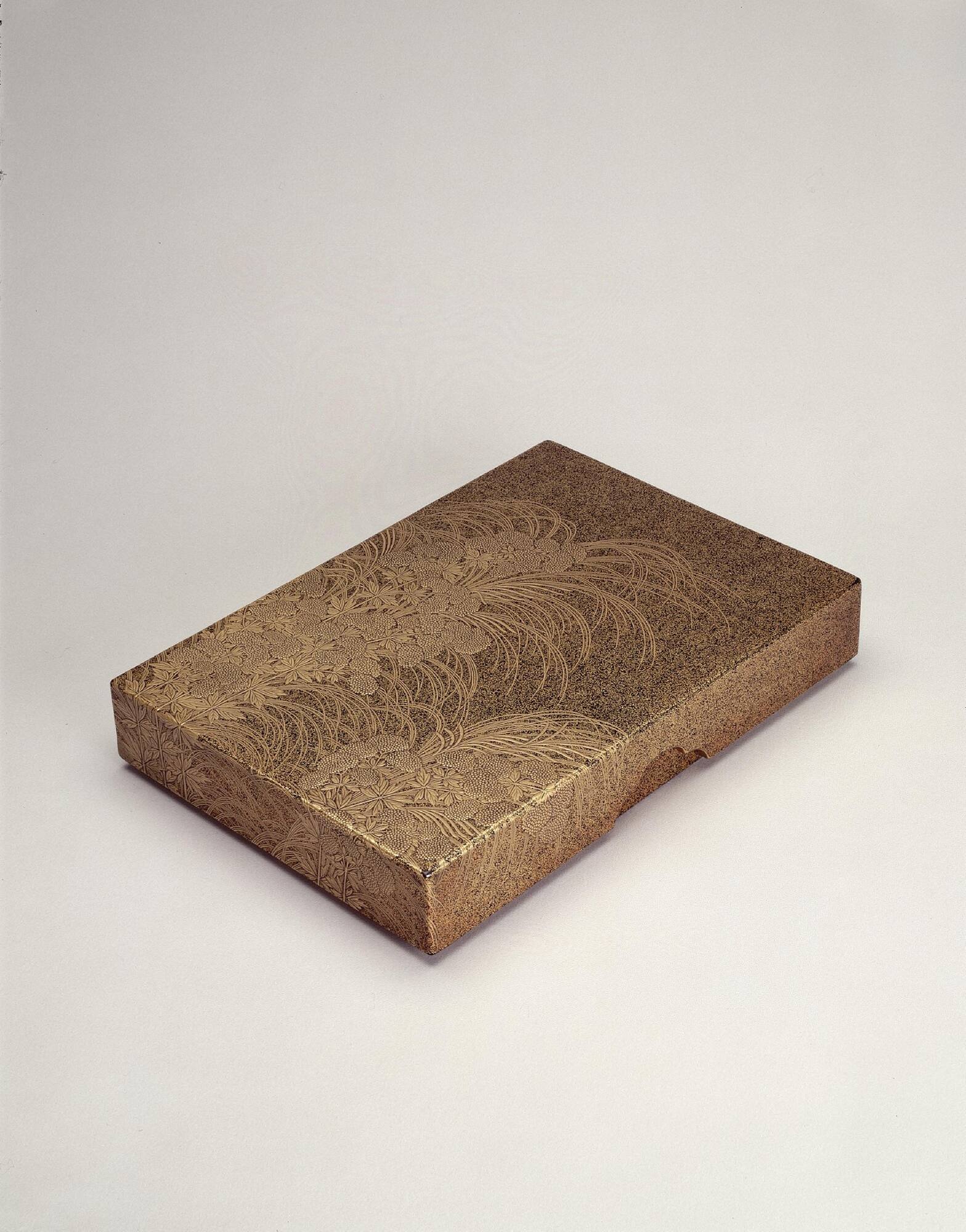
Object Details
Culture
Japan
Edo period
Date
18th century
Medium
Lacquer on wood with brush, knife, inkstone, inkstick, and water dropper
Dimensions
1 3/4 × 10 3/16 × 7 3/16 inches (4.4 × 25.9 × 18.3 cm)
Credit Line
George and Mary Rockwell Collection
Object
Number
88.002.251 a-j
Lacquer had been used widely as a protective coating on different surfaces since ancient times throu(…)
Lacquer had been used widely as a protective coating on different surfaces since ancient times throughout Asia. One of the most distinctive techniques of handling lacquer emerged in Japan during the Heian period. Known as maki-e (literally Òsprinkled pictureÓ), this technique employed gold or silver powder sprinkled on a damp lacquered ground. In the Johnson Museum writing box, typical maki-e methods are employed: coarse and flat flakes of gold have been speckled over the surface of the half-dry lacquered ground, creating a pattern resembling the skin of a pear (called nashijj in Japanese). A particular method of sprinkling the gold powder, known as hiramaki-e, is superbly demonstrated here in the design of the autumn grasses. The design of these grasses, ominaeshi and susuki, a kind of pampus reed, continues on the side of the cover, evoking the feeling of pathos, which is also common in Japanese classical poetry. The ceremonial activity of composing poetry is suggested in the writing box by the ordered display of the brush, knife, inkstone, inkstick, and water dropper. (From “A Handbook of the Collection: Herbert F. Johnson Museum of Art,” 1998)












